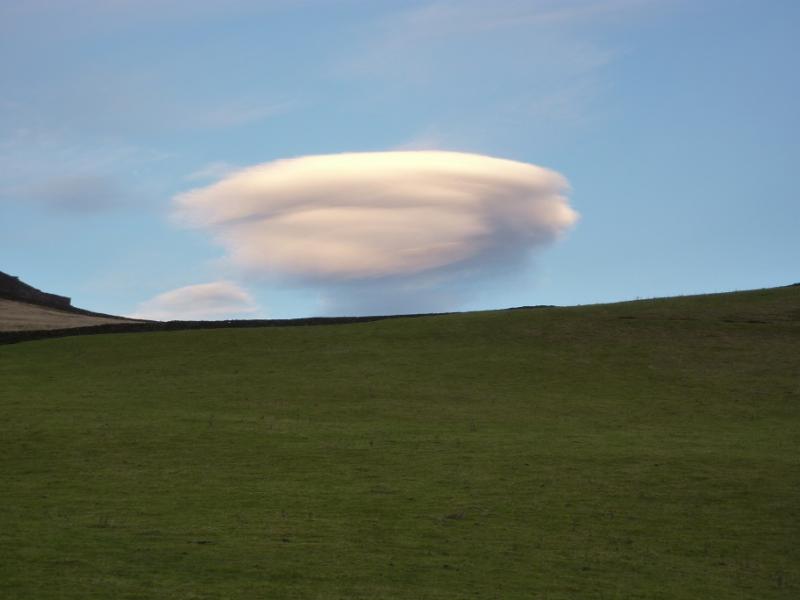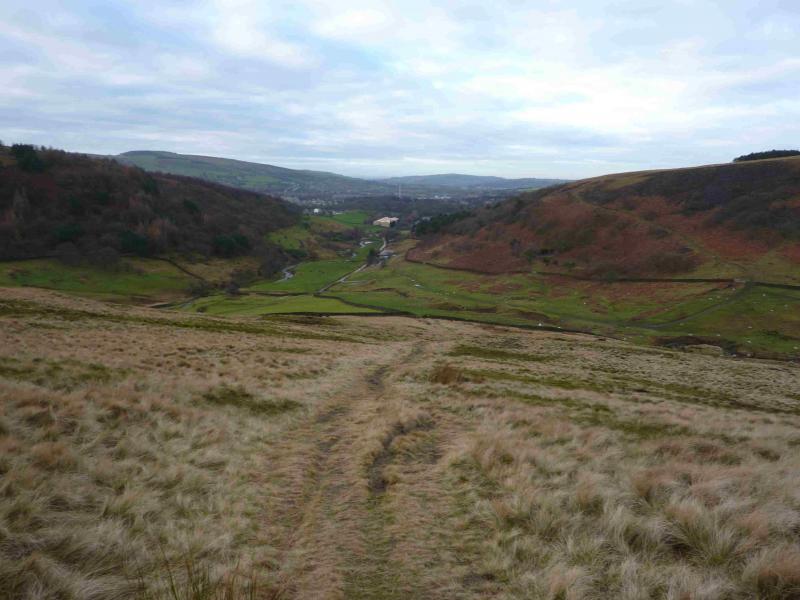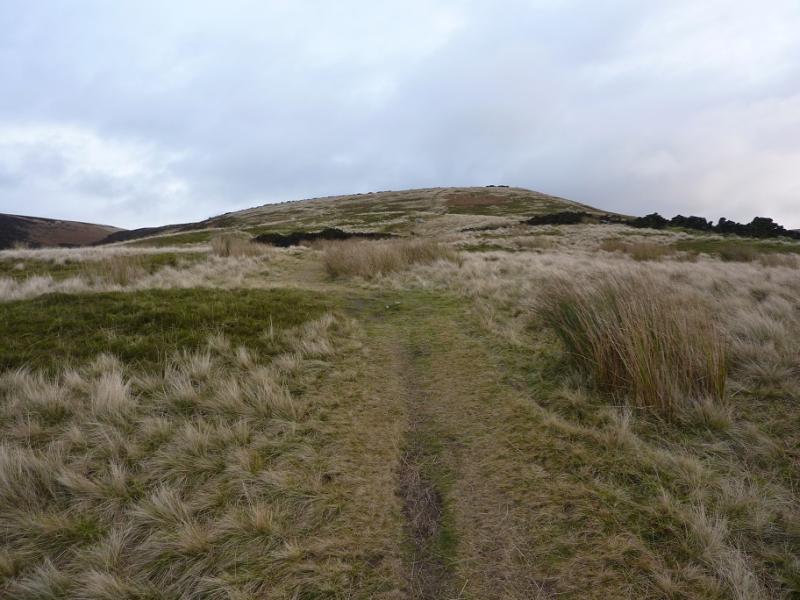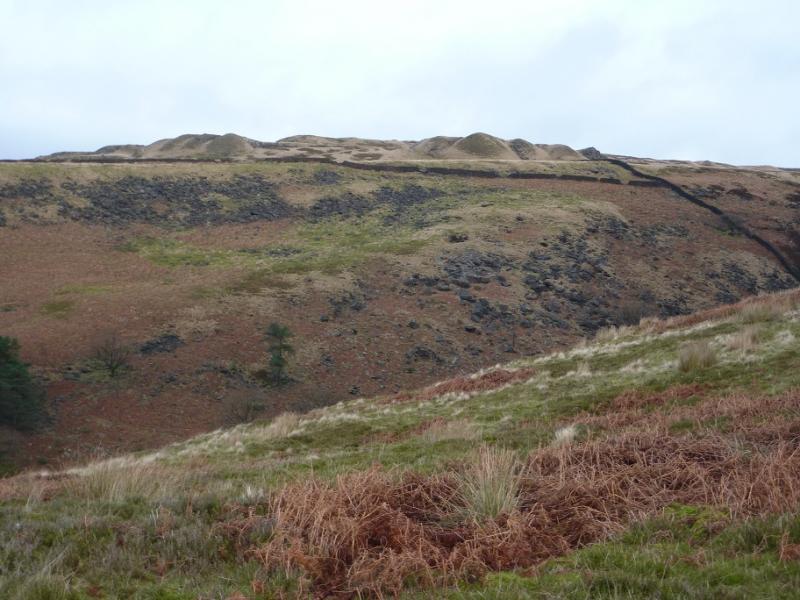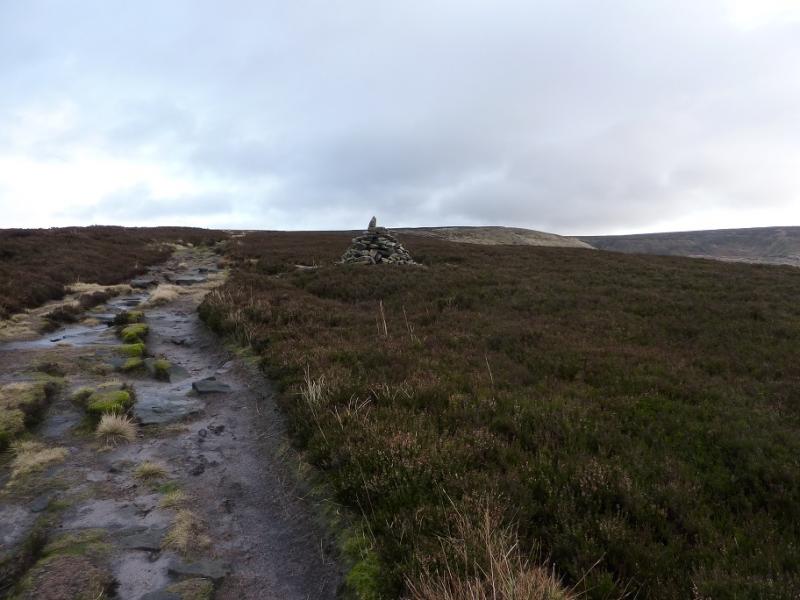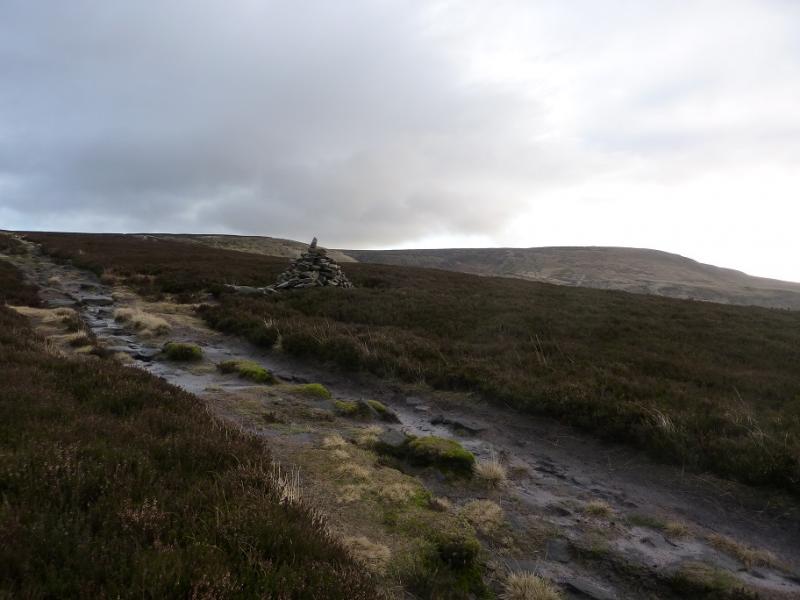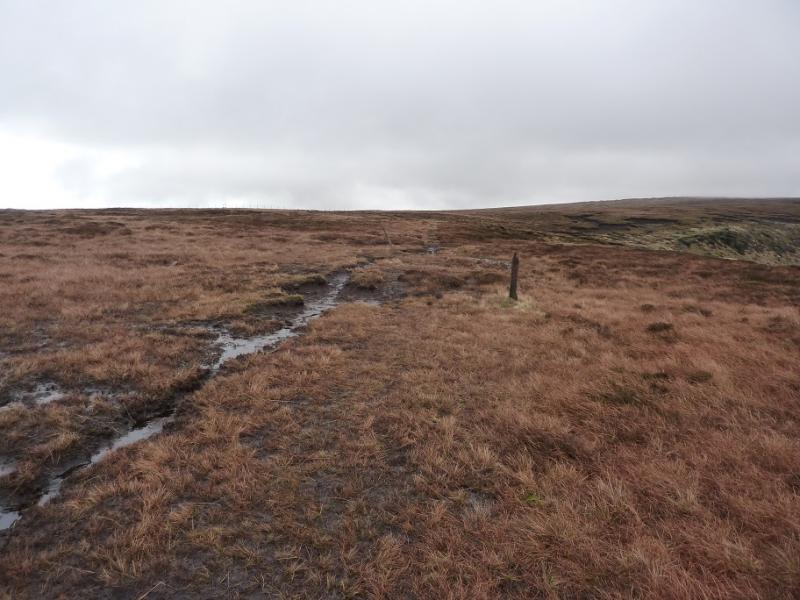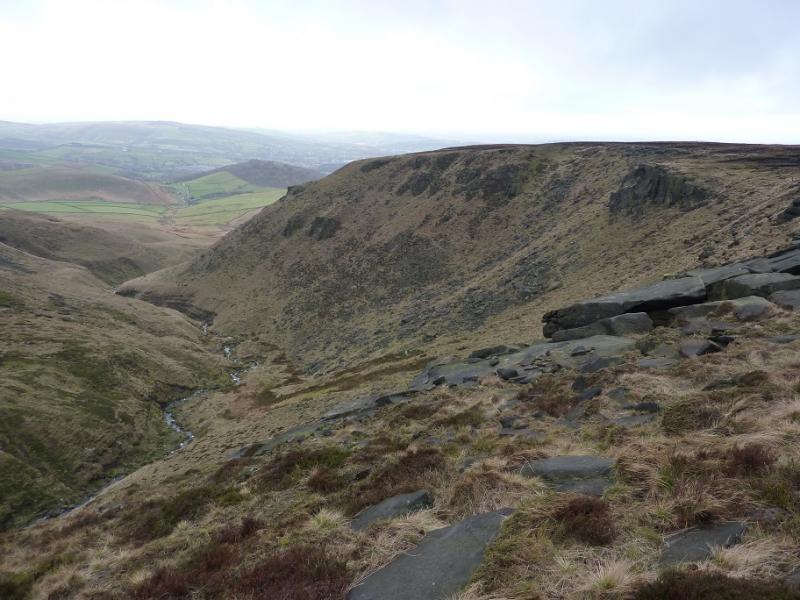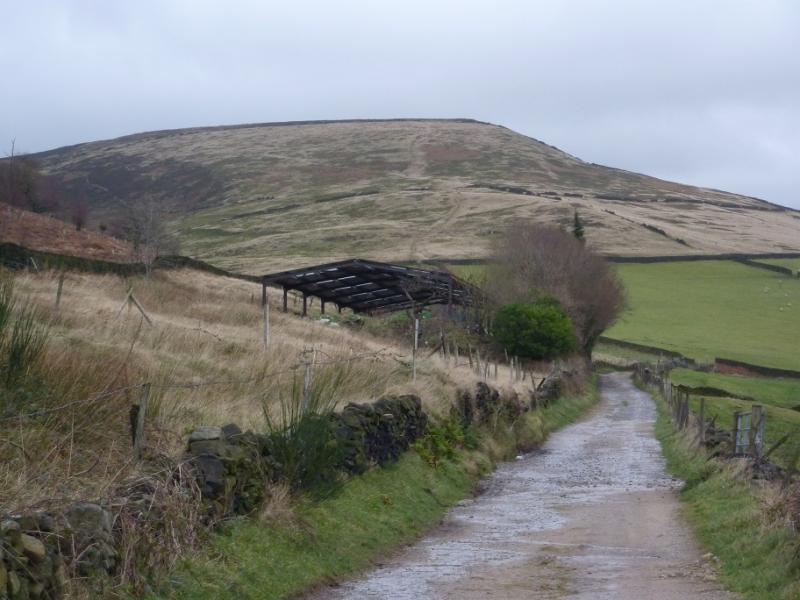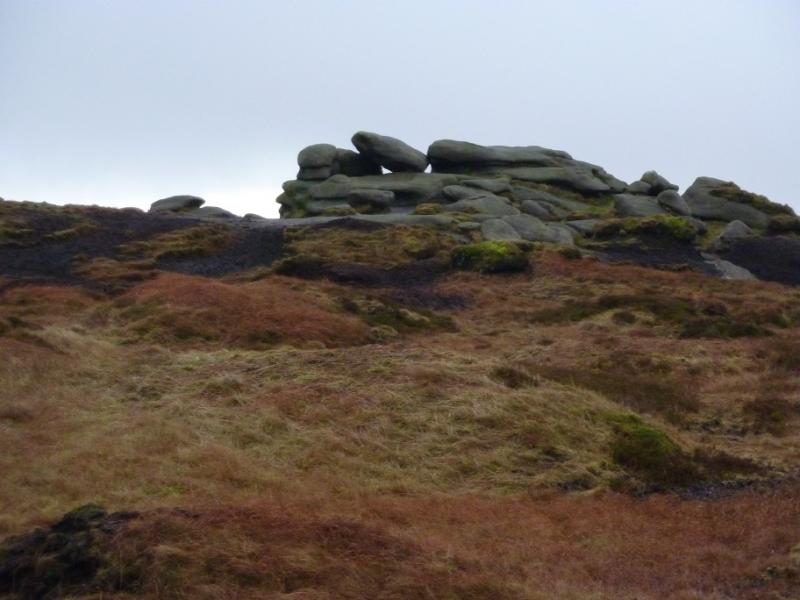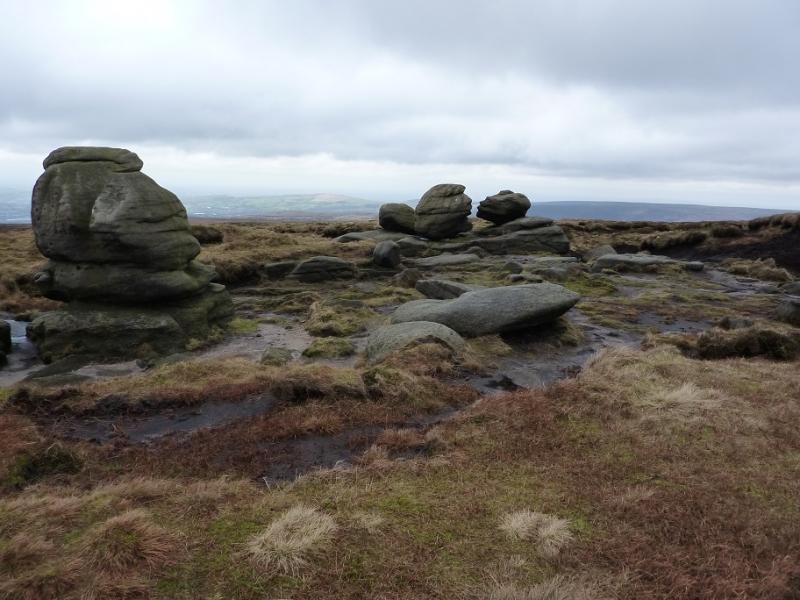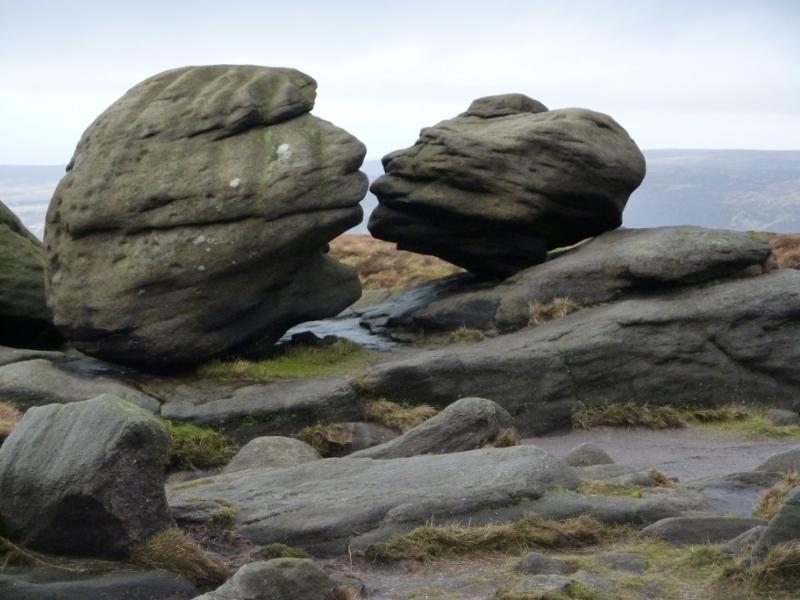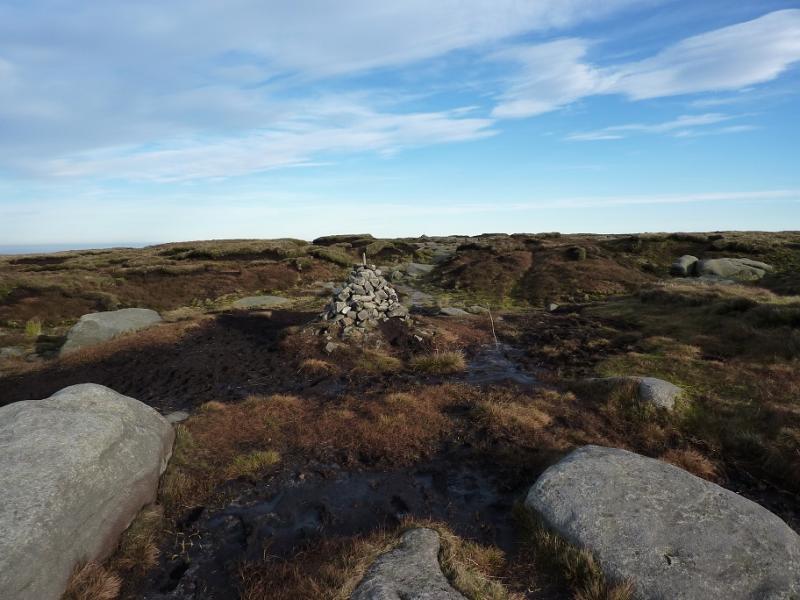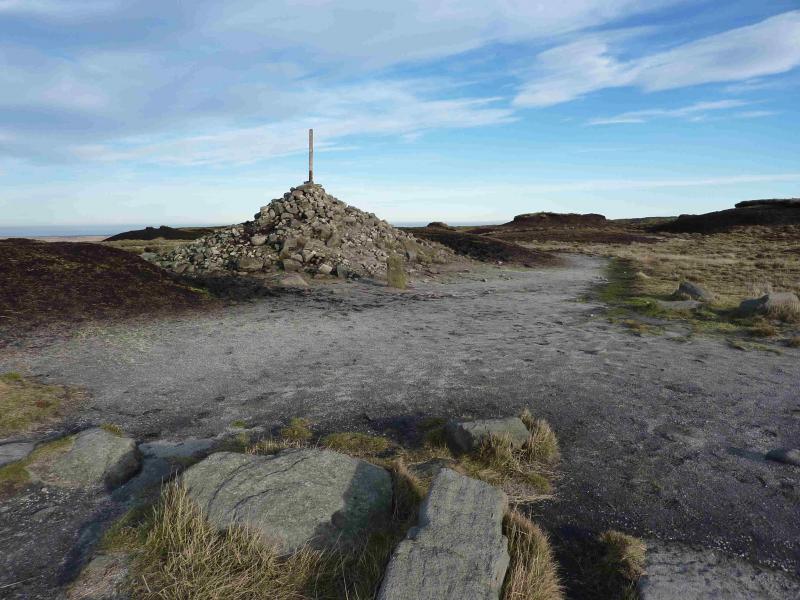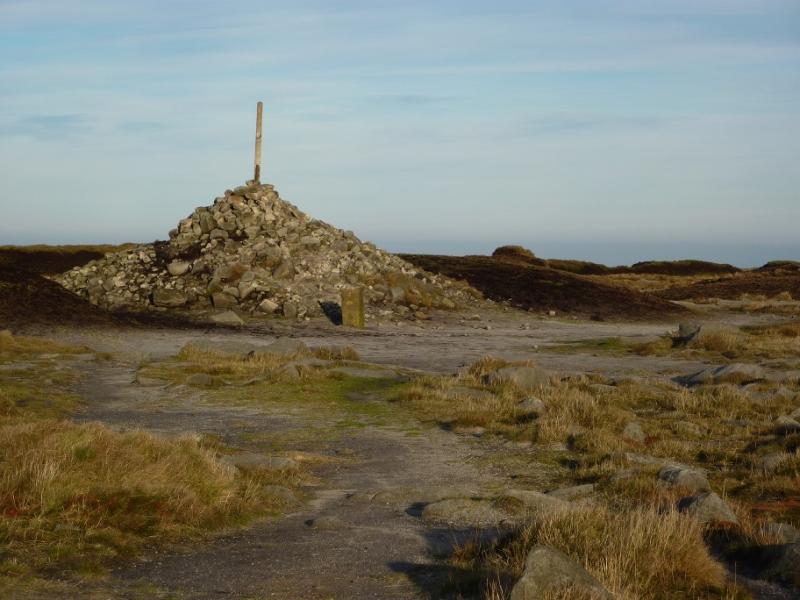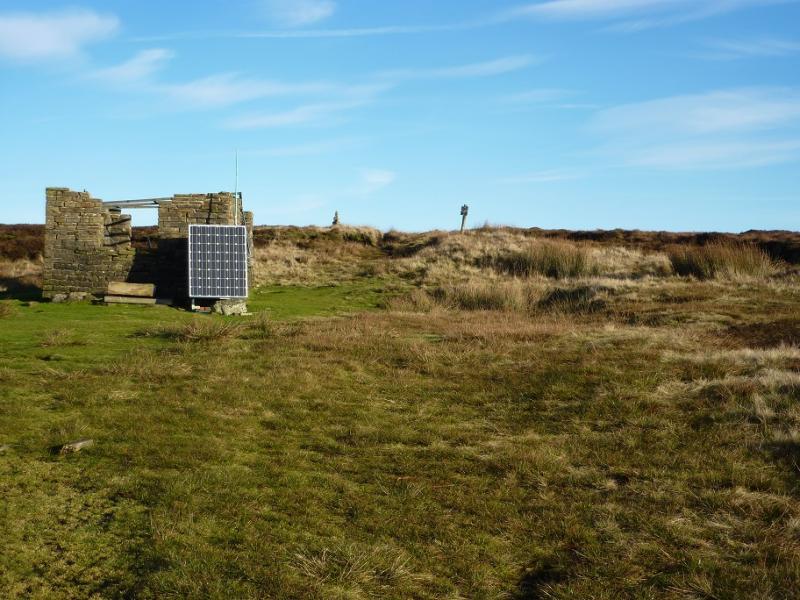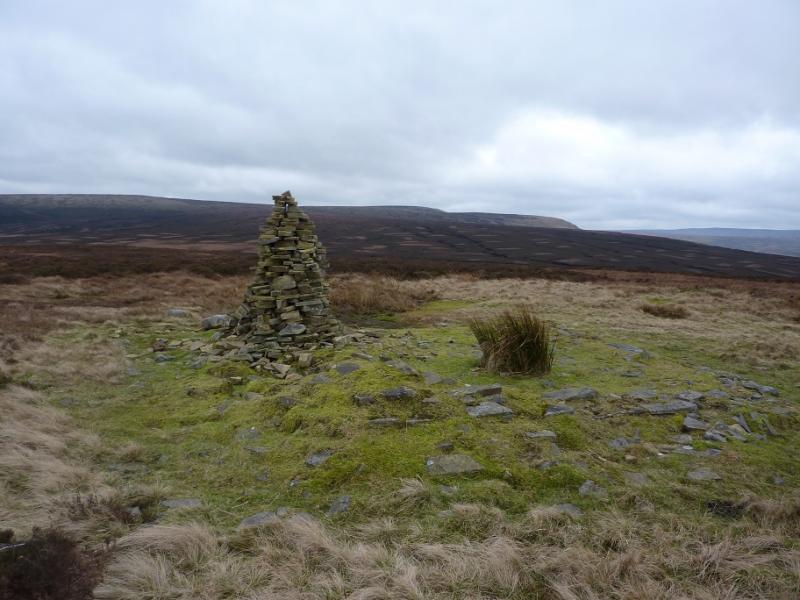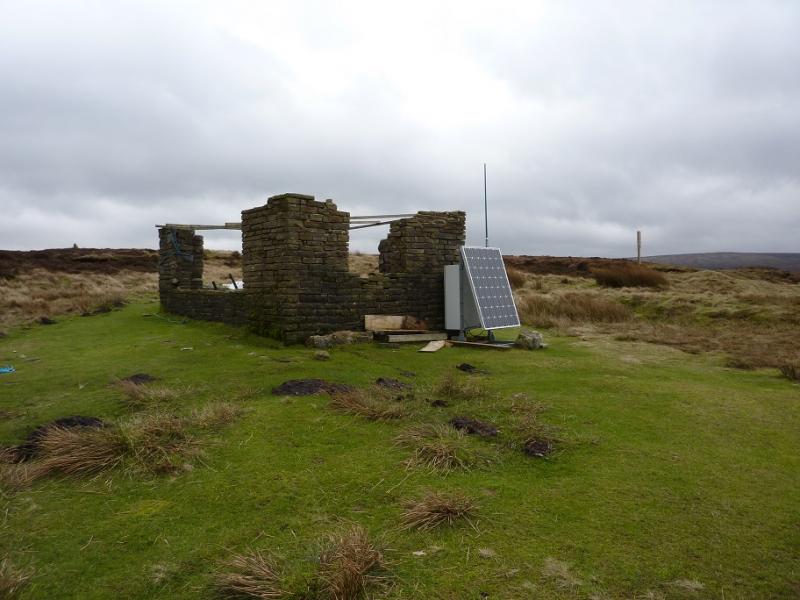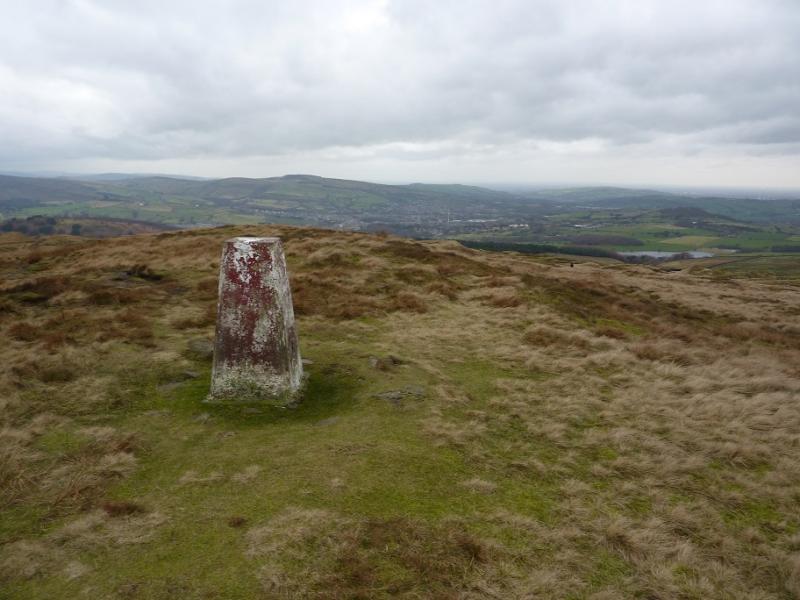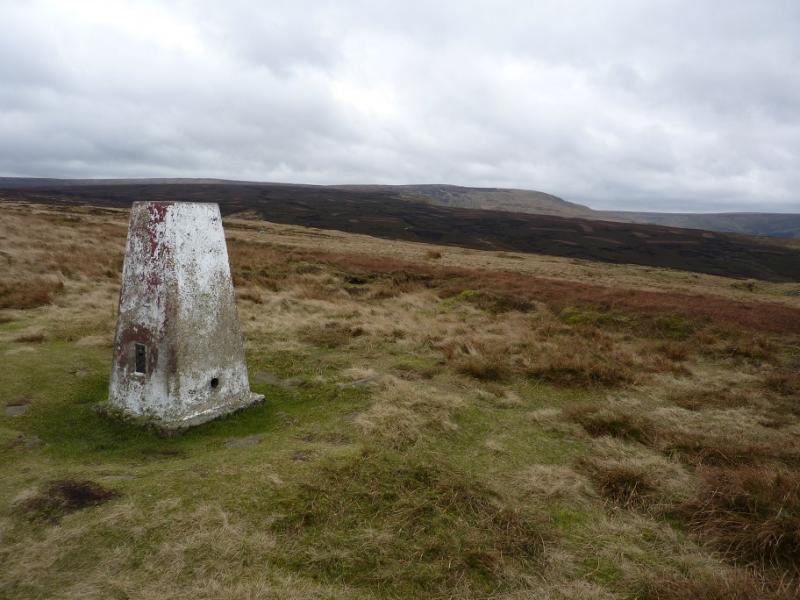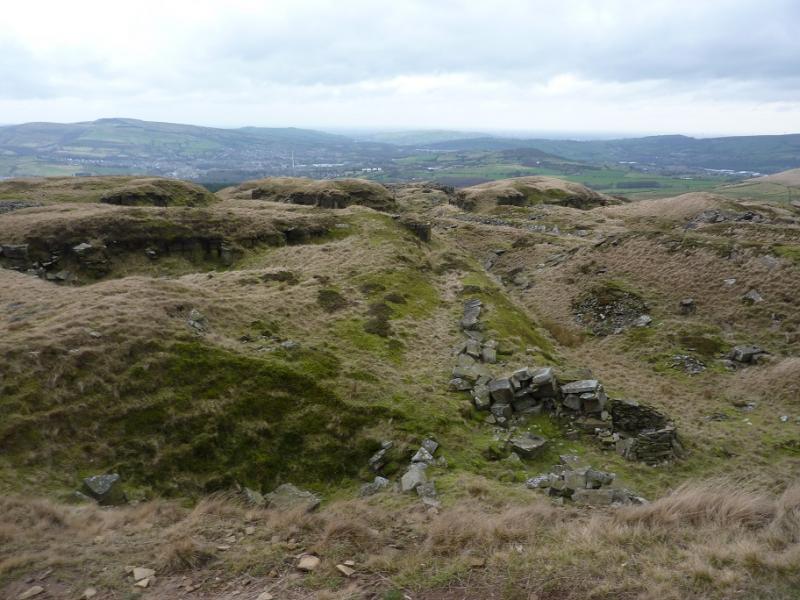Get Lost Mountaineering
You are here: England » Peak District » Bleaklow, Higher Shelf Stones & Cock Hill from Old Glossop & Snake Pass
Yellowslacks Ridge, Hern Stones, Bleaklow Head, Glossop Low & Cock Hill from Old Glossop
Yellowslacks Ridge, Hern Stones, Bleaklow Head, Glossop Low & Cock Hill from Old Glossop
Start/Finish
The turning circle at the end of Shepley Street in Old Glossop. From Glossop, take the Snake Pass road. Go through the first roundabout then take the next left at the Commercial Inn which goes up Manor Park Road. Higher up, the road seems to go right which is Shepley Street (there is a street sign). Follow this to its end at a turning circle just after a large factory on the left. Do not park in the turning circle but park sensibly close by.
Distance/Time
12 km About 4 hours
Peaks
Bleaklow Head, 633 m, SK 092 958.
Glossop Low, 481 m, SK 066 967.
Cock Hill, 426 m, SK 059 962.
OS Outdoor Leisure 1: Dark Peak. OS 1 : 50 000 Sheet 110.
Introduction
This is a fine walk in the Dark Peak which, in good weather has good views of the surrounding countryside including Black Hill and Higher Shelf Stones. Some of the going is boggy, even in a dry spell, and gaiters are recommended. This walk can easily be accomplished on a short winter's day. It is recommended when the ground is frozen as that makes it less boggy! Because of the featureless nature of some of the terrain, this walk is best undertaken in clear weather.
Route
(1) Walk up the track alongside Shelf Brook which is the continuation of Shepley Street beyond the turning circle. After about 800 m and just after crossing the bottom of Small Clough ( the bottom of Small Clough is named as Shittern Clough on 1 : 25 000 maps), there is a gate across the track with a small gate to the left. Go through the small gate and follow the path up between a stone wall and a barbed wire fence. This “confinement” is short lived and one is soon out on open land. Continue up the Yellow Slacks ridge on the obvious path. A large cairn is passed and the path converges on the edge of Dowstone Clough which is impressively deep and rocky. Continue on the path which is still quite distinctive even after it levels out at the top of Dowstone Clough. Eventually, the path becomes difficult to follow about where the stream takes a right turn. Go straight on, with bits and pieces of a path, to reach the Hern Stones. This is the only outcrop between Bleaklow Head and Higher Shelf Stones and stands on a small mound. From here, walk almost due N, on a faint boggy path, which, in clear weather, is heading for the only prominent boulders about 800 m away. These are the Wain Stones. Two of them are known as the “Kissing Stones” as, from the right angle, they look like two kissing heads. If thick weather makes the Hern Stones difficult to locate then one can walk due E from where the path fades away which should lead to intersecting with the Pennine Way which can then be followed N to Bleaklow Head. One can also walk due E from the Hern Stones to intersect with the Pennine Way. Note that the Pennine Way does not go past the Wain Stones. There is an obvious cairn near to the Wain Stones and from here a path goes, roughly NE, to soon reach the flat barren area where a large cairn marks the summit of Bleaklow Head, 633 m.
(2) Retrace to the Wain Stones. If you did not come this way then it is the path diverging right, roughly SW, from the southbound Pennine Way not far from the summit cairn. From the Wain Stones, walk roughly W. There is a path but leave it when it turns towards the N and continue W on the highest, but pathless, ground which can be boggy but not as bad as staying with the path. A few cloughs will be crossed. In clear weather, Glossop Low will be visible. Aim for this. A fence will be crossed at a stile. Look for a line of fence posts heading towards Glossop Low. A boggy track follows this line. Further on, a path leaves the track and heads over some boggy ground where there are a few “duckboard” bridges. This section is short lived and one is soon climbing up on to Glossop Low. The most obvious feature is a small ruin at the top of a track. A little higher, roughly NE, is a tall cairn which marks the highest point on Glossop Low, 481 m.
(3) Retrace to the ruin and head SW, soon picking up a path down the gentle, broad crest. Avoid the Glossop Low track altogether. The path leads to the trig point on Cock Hill, 426 m. The trig point is not visible until close. Continue down on the path which heads towards the left corner of the obvious wood then continues between two walls, passing both woods, to emerge on the road near Moorside. Follow the road down to a junction then turn left and follow this road, over a brow, back to the start.
Notes
(a) This walk took place on 14th December, 2015.
(b) It is possible to also include Bleaklow Stones but will add about 5 km of walking and about 90 minutes. The route has to be retraced back to Bleaklow Head but Bleaklow Stones is a far more interesting area than Bleaklow Head. Details of this detour are: The continuation to Bleaklow Stones is not obvious even in clear weather. Walk roughly E. There is a path but it is not very obvious. Later on some very widely spaced posts appear and these are a good guide as a good path is close to them. If you are off path then expect a lot of boggy up and down. After about 2 km, a mound should be visible ahead. As you get closer, it will look to have some outcrops. Once reached, there is very distinctive rock which resembles an anvil. This area is Bleaklow Stones, c620 m. There is no summit cairn but plenty of rocks with interesting shapes.
